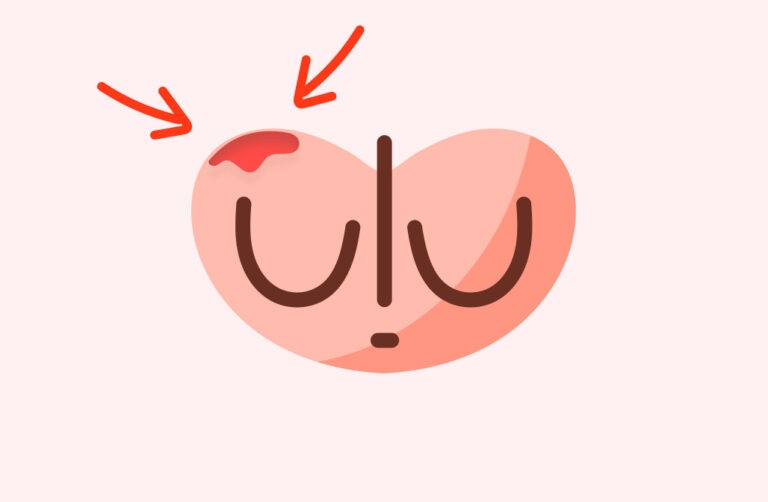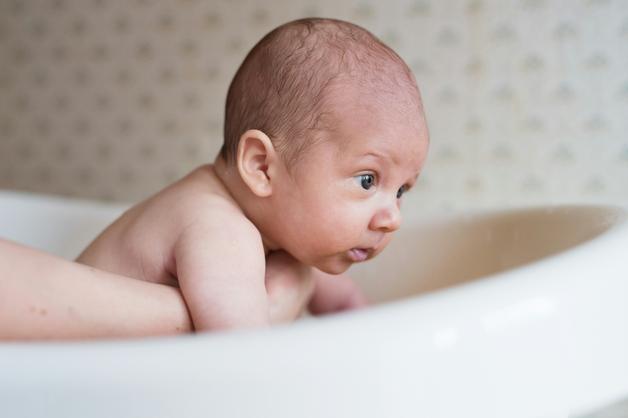Otitis—a single word, and yet a whirlwind of worries for so many parents. When your child tugs at their ear, cries without reason, or seems suddenly uninterested in their favourite story, doubts run wild. Is this just another cold, teething, or that infamous “ear infection” everyone warns about? Discovering the difference between ear pain, irritation, or an actual otitis can feel overwhelming, especially when lost sleep and anxious thoughts mix in. Fortunately, understanding the basics and knowing what to watch for can transform anxiety into action. We’ll journey through what otitis really means, how to distinguish between forms like otitis media or otitis externa, what triggers them, and how to bring relief. Ready to untangle the maze? Solutions, medical clarity, and peace of mind lie ahead—right inside these lines.
Otitis explained: understanding ear inflammation and infection
Few words unsettle parents quite like “ear infection.” Still, otitis is not just a catch-all label. It describes inflammation or infection of the ear—sometimes both, sometimes one without the other. Here’s an important nuance: Inflammation might arise even without infection, purely from allergies or irritants, while infections are caused by actual bacterial, viral, or (more rarely) fungal germs.
Anatomically, the ear divides itself into three unique zones—each vulnerable in its own way:
- Outer ear : the visible shell and fleshy canal, prone to problems from moisture, aggressive cleaning, or skin irritations.
- Middle ear : often a stage for drama post-cold or sore throat, where tiny bones (ossicles) vibrate, translating sound into magic.
- Inner ear : rarely the troublemaker, but when affected, balance and hearing both feel the shock.
The type of otitis hinges entirely on location—otitis externa (outer ear), otitis media (middle ear), otitis interna (inner ear). Recognising this trinity holds the key to effective care, especially for children whose immune shields are still under construction.
Otitis types: what sets them apart
Otitis externa – When the outer ear rebels
Ever heard of “swimmer’s ear”? That’s otitis externa, a direct result of prolonged moisture or, ironically, meticulous cleaning with cotton-tipped sticks. Think of it as the skin of the ear canal swelling in protest—red, angry, sometimes oozing clear or yellow fluid. Children who adore their splash in the pool? Higher risk. In more serious instances—let’s say in elderly grandparents or those whose immunity is struggling—otitis externa can invade deeper, sometimes reaching the bone itself (necrotising form). Pain. Swelling. Itchiness that never quite fades. If your child’s ear seems unusually sensitive post-bath or swim, pause before poking around.
Otitis media – The classic culprit
Otitis media steals the limelight—most ear infections in children arise here, tucked behind the eardrum. It often follows swiftly on the heels of a stuffy nose or stubborn cough. It’s abrupt: sudden ear pain (otalgia), fever, a child who’s suddenly cranky. In unlucky cases, the pressure inside builds, sometimes rupturing the eardrum, releasing otorrhea (discharge), and causing a fleeting drop in hearing. But not all forms are noisy—a silent “otitis media with effusion” tiptoes in, collecting thick fluid with little pain, just muffled hearing. Recurrent misadventures can evolve into chronic forms—persistent discharge, dull pain, and the unwelcome possibility of long-term hearing hurdles.
Otitis interna (Labyrinthitis) – Inner ear emergencies
Rarer still is otitis interna or labyrinthitis. The room spins, a child clings to you dizzy and unsteady, overwhelmed by waves of vertigo. Hearing may dip, tinnitus can ring mercilessly, and nausea shadows each movement. Here, viruses often play the villain. Don’t hesitate—balance problems linked to inner ear troubles demand immediate attention.
Unusual suspects and special mentions
Occasionally, barotraumatic otitis disrupts family holidays—think ear pain during flights, especially with sniffles. Alternatively, otomycosis (fungal infection) sneakily capitalises on humid climates, making ears itchy and discharge appear odd, sometimes with black or white flecks.
What causes otitis? Diving into risk factors
“Why my child?”—so many parents ponder that during restless nights. Otitis often partners with:
- Young age: Smaller, horizontal Eustachian tubes (the ear’s built-in drainage pipes) set up toddlers for trouble.
- Group childcare: More sniffles, more sneezes, more germs to share.
- Secondhand smoke: Tiny particles irritate ear lining. No safe level exists for children.
- Prolonged pacifier use (after 6 months): Surprising but true—risk climbs.
- Frequent swimming: Moisture lingers, especially if ears remain damp.
- Aggressive cleaning: Cotton buds create micro injuries; healthy wax protects, not hinders.
- Allergies: Nasal or skin flare-ups often set off a chain preventing normal ear drainage.
- Genetic influences: In some families, these infections seem to run from generation to generation.
- Nasal stuffiness: Obstructed drainage is a classic prelude to otitis.
- Low immunity and anatomical quirks: Children born with narrower ear canals or underlying medical conditions can notice ear issues more often.
The villains vary: Streptococcus pneumoniae, Haemophilus influenzae, Moraxella catarrhalis for typical microbial infections, and Pseudomonas aeruginosa or Candida species in special circumstances.
Spotting the symptoms: reading the signs
Ear pain is the headliner, but supporting symptoms shift with age and otitis type:
- Infants/Babies: Nonstop crying? Tugging ears? Feeding less or dropping bottle mid-suckle? Sometimes, the first clue is poor sleep or unusual irritability. Pay attention to subtle balance glitches.
- Children/Teens: Sharp earache, reduced hearing, or that classic “blocked ear” sensation. Ruptured eardrums add discharge; untreated, it may persist.
- Adults: Sometimes, discomfort is milder. Yet, recurring pain or persistent hearing loss—never a trivial issue.
- Elderly: Here, the script flips. Instead of pain, there might be confusion, malaise, or general decline. Watch for swelling behind the ear or discharge.
- Otitis interna: Vertigo, hearing fades, perhaps a relentless ringing—each pointing to an inner ear alarm.
Fever may join, or skip altogether. Worsening symptoms, constant pain, or a child who seems particularly sick—these never deserve delay.
Diagnosing otitis: medical approach decoded
Parents often wonder, “What will the doctor check?” Diagnosis starts with questions about recent symptoms (Was there a cold? Any allergy history?), then shifts to a detailed look inside the ear using an otoscope—hunting for redness, swelling, ear canal edema, or membrane rupture. Middle ear issues? Pneumatic otoscopy checks how the tympanic membrane moves; tympanometry and audiometry can measure hearing and middle ear pressure. For stubborn or severe cases, a swab may be taken for microbial cultures, especially if the culprit is not following the script. Imaging—very rarely—may be needed if deeper structures seem involved.
Smart treatment and effective home care
Medical options
- Pain relief remains the cornerstone—acetaminophen or ibuprofen can turn overwhelming discomfort into quiet rest. A warm compress nearby? Timeless comfort trick.
- Antibiotics aren’t automatic. They help when bacteria are to blame—severe or persistent acute otitis media, especially in young children. Many episodes resolve quietly if caused by viruses.
- Ear drops treat otitis externa. Here, dry ears matter as much as good medication, so plug ears while bathing when advised.
- Ear tube surgery (tympanostomy tubes/grommets) is sometimes proposed for children beset by repeat infections or stubborn fluid, allowing for proper ventilation.
- Supportive tricks—like encouraging little ones to swallow or sip water while flying—help balance pressure.
- Say no to cotton buds: They do more harm than help.
Home strategies and natural relief
Daily life is full of little tweaks that can support recovery and keep otitis at bay:
- Nasal hygiene: Gently clearing blocked noses can lower risk.
- Drying ears well: After swimming, pat the outer ear dry—no deep cleaning needed.
- Warm compresses: Soothing for pain, always ensuring it’s never too hot.
Natural solutions abound, but always ensure safety (and avoid oil drops unless approved by a healthcare professional).
Prevention: daily habits with big impacts
Good habits can tip the odds in your favour:
- Skip cotton swabs: The ear is self-cleaning, and wax is its natural shield.
- Make the home smoke-free: Nothing protects better.
- Tame allergies: Managing sneezing, itching, or eczema can also defend ears.
- Practice hand hygiene: Less germs, less drama.
- Breastfeeding (when possible): Trains young immune systems, fortifying them.
- Pacifiers with discretion: Transitioning away after six months is worthwhile.
- Travel tips: Encourage sucking on a bottle or a soft sip during plane rides.
- Avoid crowded care settings during seasons of sniffles, if feasible.
Worried about food allergies influencing infections? Sometimes, unrecognised intolerances play a subtle part—if problems persist, discuss with your paediatrician.
When otitis gets complicated: what might go wrong
Thankfully, most otitis episodes heal with care. But occasionally, complications raise stakes:
- Perforated eardrum: Sudden discharge, momentary hearing drop—often self-healing, but sometimes more care needed.
- Mastoiditis: Swelling behind the ear. Immediate medical check, always.
- Chronic hearing loss: Long-standing fluid or repeat attacks may dull hearing, highlighting the value of early action.
- Rare dangers: Meningitis, brain abscess—exceedingly rare but dramatically serious.
- Serious external infections: Necrotising versions especially harm the elderly or those with weak immunity.
Never ignore ongoing pain, high fever, or ear swelling that persists.
Balancing scientific certainty and parental instincts
There are myths around every subject—otitis included:
- Antibiotics aren’t always needed: Many cases are viral or self-resolving.
- Ear tugging isn’t always infection: Tiredness, teething, or habit explain many episodes.
- Cotton buds don’t help: They actually risk pushing wax deeper.
- Vaccines protect, but not fully: Immunisation lowers odds but isn’t foolproof.
- Pain relief is safe and necessary: Comfort isn’t luxury—it’s part of good care.
- Swimming isn’t always the bad guy: Clean, well-dried ears make water play safe.
Special care by life stage
- Babies & toddlers: Unexplained irritability, feeding issues, or ear-pulling—err on the side of seeking advice, especially if baby is under 6 months or symptoms persist.
- Older children/adults: Repeat pain, hearing struggles, or discharge? Medical advice is wise if these don’t clear.
- Elderly: Subtle signs like confusion or malaise may overshadow pain, but mustn’t be overlooked.
- Low immunity: Quicker complications mean more urgent attention.
Key takeaways
- Otitis describes ear inflammation—sometimes infection—affecting outer, middle, or inner ear. Anyone can be affected, though kids meet it most.
- Symptoms change with age: pain, hearing issues, discharge, unusual behaviour—even dizziness with inner ear forms.
- Fast action and basic care (painkillers, rest) usually suffice. Antibiotic therapy only if strictly necessary.
- Routine habits—no cotton buds, avoiding smoke, treating allergies, handwashing—offer the best defence.
- Early recognition, responsive treatment, and consulting professionals when in doubt make the difference.
- For extra help, there’s always support available—try the application Heloa for tailored advice and free child health questionnaires.
Questions Parents Ask
Can otitis cause long-term hearing problems?
While most otitis cases resolve without any lasting harm, repeated inflammation or ongoing fluid behind the eardrum can cause temporary hearing trouble. Only rarely does chronic or poorly treated otitis leave long-term effects. That’s why regular check-ups and prompt attention to persistent issues are so effective in protecting hearing.
When should a parent worry about a child’s ear pain?
It’s natural to feel anxious if your child is having ear pain. Immediate concern is warranted if pain is severe, persists for more than a couple of days, comes with high fever, sudden hearing loss, swelling behind the ear, or your child appears unusually inactive or drowsy. Otherwise, mild discomfort often settles down quickly—monitor closely and act swiftly if things worsen.
Is otitis contagious?
The process of otitis isn’t directly passed between children, but the viruses or bacteria that lead to middle ear infections can circulate from one child to another (especially during cold season). Good hand hygiene and limiting exposure during sickness help stop the spread in families.
Further reading:









